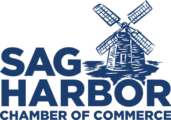Elizabeth A. Morton National Wildlife Refuge, a 187-acre peninsula on Noyack and Little Peconic Bays, boasts exceptionally diverse habitats. Sandy and rocky beaches fringe the peninsula, while wooded bluffs overlook the Bays. Morton consists of upland forest, fields, ponds, salt marsh, beach and a lagoon. These habitats are used by a variety of wildlife including white-tailed deer, eastern chipmunk, painted turtles, green frogs, songbirds and osprey. Waterfowl, such as long-tailed duck, common goldeneye and white-winged scoter, are common during the winter months, while piping plover, terns, and other water birds use the beach during the spring and summer months.
- The refuge is open ½ hour before sunrise until ½ hour after sunset.
- No pets are allowed on the refuge, their presence disturbs wildlife;
- Late October through early April offer the best times to view waterfowl on the refuge. The forests come alive in spring with the arrival of migratory songbirds; while chickadees, black ducks, wild turkey and white-tailed deer may greet you year-round.
- In order to protect sensitive nesting birds, a portion of the beach is closed from April – August. During that time, binoculars help you see the refuge’s beach-dependent wildlife.
- Mosquitoes and flies can be prevalent during the spring and summer. Be sure to bring bug spray.
- Poison ivy and ticks are found throughout the refuge. Stay on the trails to limit your exposure.
- Restrooms are located at the Visitor Contact Station at the start of the trail.
